When we discovered New York based sustainable fashion line, THE SERIES, we couldn’t resist reaching out to the thinktank behind it, Ella Wiznia. The colorful, collage-inspired clothing brand builds new pieces from reused materials that fit and compliment any body. Each piece celebrates self-expression, flexibility, and sustainability while existing as wearable art that carries stories from eras before. Since THE SERIES began, it has received welcomed and warm attention from publications like Teen Vogue, Out, Cosmo, and more.
Needless to say, when our writer KC Esper spoke to Ella about the mission behind her brand, she had major heart eyes. Here’s what Ella had to say.
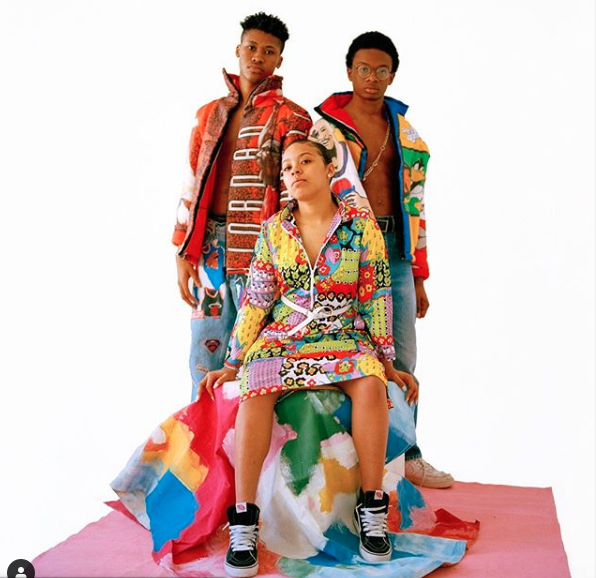
AMFM: What was your original inspiration behind creating a brand like THE SERIES?
ELLA: Starting a clothing brand wasn’t really something I planned on doing. During my junior and senior year of high school, I developed an eating disorder—I engaged in obsessive over exercise and severe food restriction. During my recovery, I realized what a large impact the images in media had had on me. I couldn’t help but notice physical signs and symptoms of an eating disorder in the models in ads of stores I had shopped at, in television shows I watched, and in people I had looked up to. These were images and people I, both consciously and subconsciously, idealized and strove to be more like. I decided to stop supporting apparel brands that I felt promoted unrealistic and unhealthy body types. In 2013, that was pretty much everywhere but second hand and vintage shops. The way most second hand and vintage shops are set up is by the type of garment, not by its size. The emphasis shifted from first seeing if my body would fit a piece of clothing, to seeing if the clothing fit my vision of self-expression. Oversized vintage denim pants became a staple in my wardrobe and a canvas for my creations. While in treatment for the eating disorder, I took up embroidery. I incorporated this needlework into my jeans, painting with thread and started collaging on the denim with vintage patches, appliques, and textile remnants. I started to customize pieces to fit my vision and my body, rather than changing my body to fit the clothing. Friends, and then strangers, started to commission pieces for themselves.
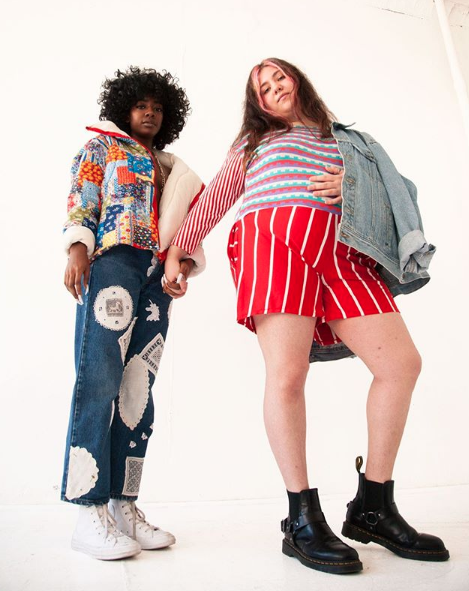
AMFM: How does recognizing how much clothing/textile waste there is in the world fuel the mission behind your own clothing line? And how does it make you more conscious of the work you’re doing?
ELLA: Soon after I started shopping, mostly second hand, I became aware of the tremendous amount of clothing being thrown away and donated, and the enormously harmful impact the production of new clothing has on our environment. I decided to exclusively shop secondhand and from brands who were strongly committed to sustainable and ethical practices.
I also committed to use solely recycled and renewed materials in my work. I strongly believe that there is no need to produce more, when we already have too much. That is why each piece created in THE SERIES, whether denim or reconstructed, is approached as collage, sourcing textiles and fragments from varying decades and origins, piecing them together to create distinct works of wearable art.
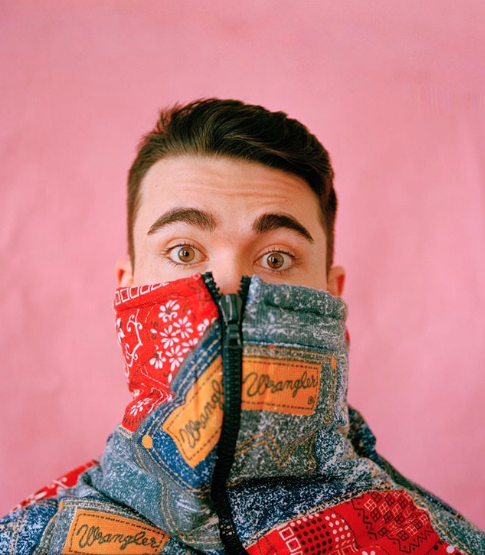
AMFM: What sort of dimension do you think working with existing materials gives to each piece?
ELLA: I have always been really fascinated with how physical objects like buildings, furniture, and textiles hold history and tell stories. I find it remarkable how these items can endure time (unlike people), maintain relevance, and can be adapted for modern function and/or appreciation while still holding its original essence and acting as a reminder of an era gone by. Each collage in THE SERIES brings together fragments from varying decades and origins and combines their stories together to create a larger narrative within a contemporary context.
AMFM: A lot of your pieces include materials like denim, quilts, and patches. Is there a material you like working with over all others? Why?
ELLA: I love how denim shows the story of its wearer. How certain parts are more faded than others, how tears in the fabric don’t make them unwearable but actually add to their charm and texture. I also love the history of the material. What started out as durable workwear evolved into a form of disobedience in the 1950s as a way for young people to rebel against outdated and limited societal norms. Denim is still work wear, and it is our work to stand up for what we believe in, promoting inclusivity and diversity, sustainability, creativity, and individuality. Denim is both a symbol for change and progress, as well as a canvas for our messages. Additionally, while going through recovery I found it extremely difficult to dress my changing body. I became highly sensitive to how certain fabrics felt on my skin. One of the only things I felt comfortable wearing were oversized vintage denim jeans. I could move freely in them, but still felt supported. I could fit them throughout my recovery by simply adjusting the belt that held them up. They began to represent freedom for me.
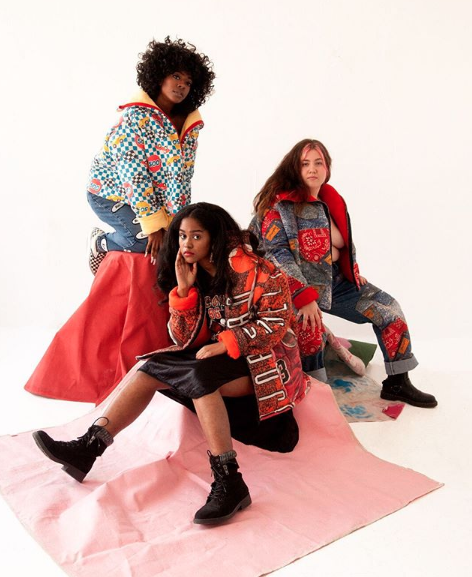
AMFM: Is there any material you’re experimenting with or would like to in the future?
ELLA: I just began working more with vintage charms and beads, which has been very fun! I came across these incredible deadstock tiny plastic cereal box charms that I couldn’t resist. I am interested in how unconventional and unexpected things that we have created and now (as a people and planet) are responsible for can be reworked and reintroduced into our daily lives.
AMFM: What does your process look like when you come up with a new idea?
ELLA: The material often inspires each piece. I will find an incredible fabric or patch or trim that then sends me down a creative rabbit hole. Also—and I think this has to do with me being a reformed perfectionist—I find a lot of inspiration in mistakes. For instance, I will quickly see a quote and think it says one thing when it actually says another. But then I decide I liked my version better and so I’ll embroider that onto a piece. Or I wish the jacket that just walked by me had this design on it or a pocket here or… and so I that will turn into something I want to experiment with.
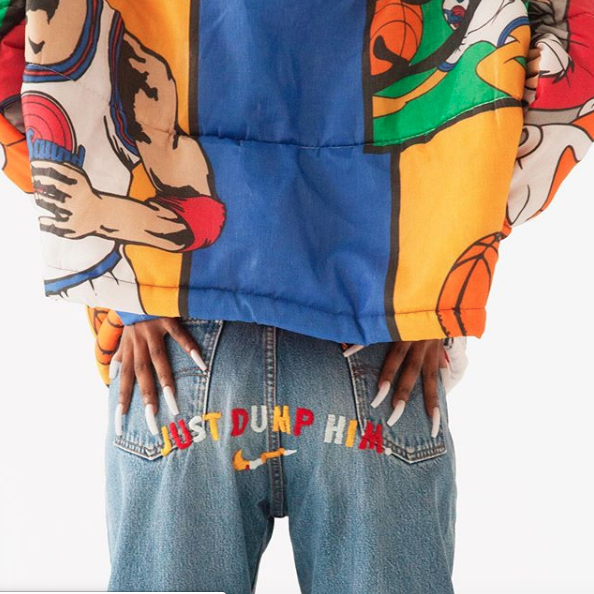
AMFM: As a brand that recognizes itself as seasonless and genderless, how have you noticed your audience really embrace the flexibility of your clothing?
ELLA: Just like so many things and products in modern life, gendered, seasoned, and trend-based clothing is an arbitrary construct that was probably decided upon by some drunk white guys hundreds of years ago. It is simply a way to sell more stuff and limit autonomous freedom and expression. I feel so inspired and encouraged by how readily and happily people have embraced more fluid clothing. I see it as a testament to the change desired and needed from the outdated models that we still largely follow, simply because it is what we are used to.
AMFM: Where do you see the future of THE SERIES heading? How do you hope to continue inspiring your audience?
ELLA: One of my favorite things about THE SERIES has been the incredible people I have been able to meet and stories that have been shared. This has inspired a project spearheaded by author and activist Nicolaia Rips and I that intends to honor real people and educate on sustainability, gender-fluidity, ethical consumption, and inclusivity through Q +A style interviews! THE (INTERVIEW) SERIES will go live later this fall and we will be releasing and new conversations weekly. We also have some really exciting collaborations with incredible humans and brands that we will be announcing soon. Definitely keep your eyes and ears open because they will all be announced on our website and instagram soon!
Contributing Writer: KC Esper
Photo Credits: THE SERIES, via Patrick No @patrick_no and Ji Oui @jiminounyc
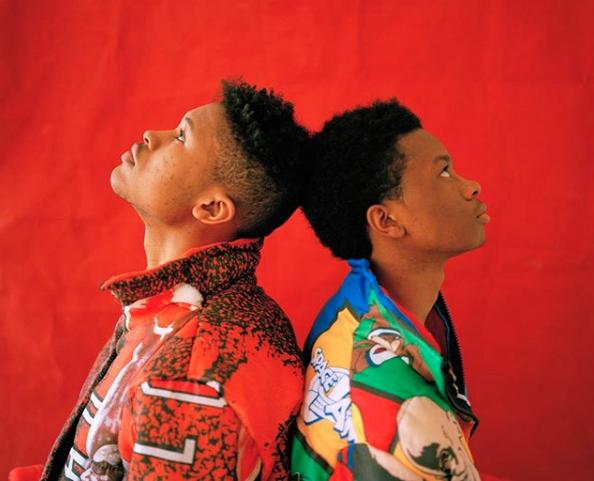
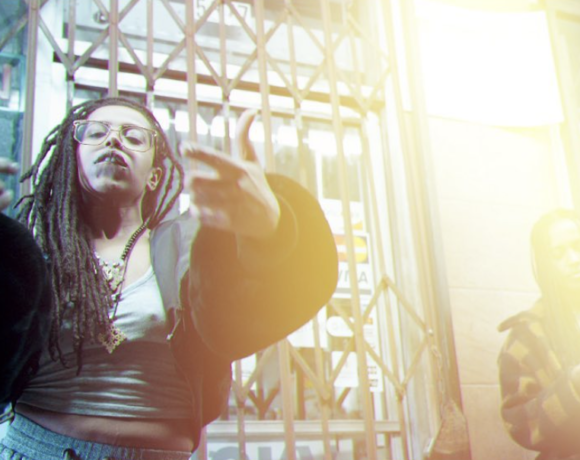
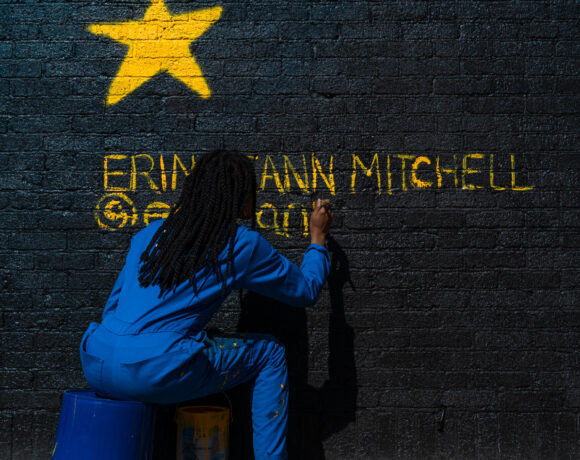
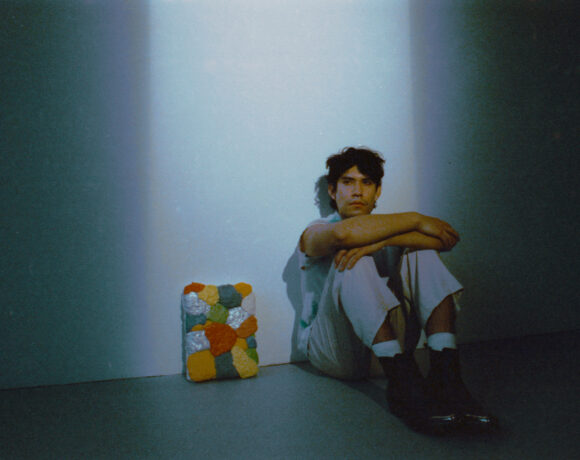
COMMENTS ARE OFF THIS POST